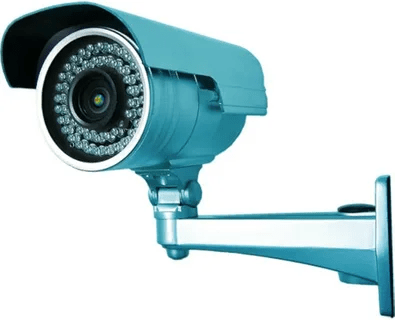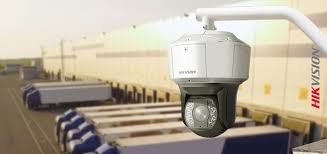In the world of digital transformation, Optical Character Recognition (OCR) has become a critical tool for converting printed or handwritten text into machine-readable data. However, when it comes to languages like Japanese, which utilize multiple complex scripts, OCR technology faces unique challenges. Japanese OCR systems must handle the intricacies of Kanji, Hiragana, Katakana, and often even Roman characters, making accurate recognition and translation particularly difficult. This blog explores the most common challenges faced when using Japanese OCR and how to overcome them, with a special focus on the role of AI data collection companies in improving the performance of OCR systems.
Understanding the Complexity of Japanese OCR
Unlike languages with simple alphabets, Japanese presents multiple layers of complexity. It incorporates Kanji characters (which are logographic and borrowed from Chinese), Hiragana and Katakana (syllabic scripts), and often Romaji (Roman alphabet characters). Each script has its own unique features, and texts often contain a combination of these characters, requiring OCR systems to be highly adaptable.
Japanese text may also appear in different formats—vertical or horizontal writing, various fonts, and diverse typesetting styles. This variation significantly increases the difficulty of OCR in comparison to languages that use a single script or a simple alphabet.
Here are some of the common challenges users encounter when using Japanese OCR and the solutions that can help mitigate these issues.
1. Handling Multiple Scripts in One Document
Challenge: One of the biggest challenges in Japanese OCR is recognizing multiple scripts within a single document. Unlike English, where an OCR system typically needs to recognize one script, Japanese documents often contain Kanji, Hiragana, and Katakana, as well as numeric and Roman characters, making accurate recognition a challenge.
Solution: AI-driven OCR systems are designed to handle this complexity by using machine learning models that have been trained on vast datasets containing examples of each script. AI data collection companies play a crucial role here by providing diverse and comprehensive datasets that cover various combinations of Japanese characters. These datasets help train the OCR systems to recognize different scripts, even when they appear together in the same document.
By feeding large amounts of labeled data into AI models, OCR systems learn to distinguish between scripts and improve accuracy in multi-script documents.
2. Recognizing Complex Kanji Characters
Challenge: Kanji characters are notoriously complex, with some containing over 20 strokes. Recognizing these intricate shapes accurately is one of the most significant hurdles for Japanese OCR technology. Furthermore, many Kanji characters look similar, and slight variations in font or handwriting can lead to misrecognition.
Solution: Advanced deep learning algorithms, particularly Convolutional Neural Networks (CNNs), are used to recognize Kanji by analyzing patterns and shapes in the data. AI data collection companies play a vital role by supplying OCR systems with high-quality Kanji datasets, covering a wide range of fonts and handwritten characters. These datasets allow the OCR system to learn the subtle differences between similar characters and improve recognition accuracy.
Additionally, image preprocessing techniques, such as noise reduction and contrast adjustment, can enhance the quality of the scanned image or photo, making it easier for the OCR system to interpret complex Kanji characters.
3. Dealing with Vertical and Horizontal Text Layouts
Challenge: Japanese text can be written both horizontally and vertically, depending on the format of the document. For instance, novels, newspapers, and certain forms of traditional Japanese documents may use vertical text, while websites, brochures, and modern publications often use horizontal text. This dual orientation can confuse OCR systems, which need to determine the direction of the text before recognition.
Solution: AI-based OCR systems incorporate layout analysis algorithms that can detect the orientation of the text within a document. AI data collection companies provide OCR systems with examples of both vertical and horizontal text, allowing them to recognize and adjust for different layouts. As the system processes more examples, it learns to automatically detect the text direction and switch modes accordingly.
Users can also manually specify text orientation for certain types of documents, improving accuracy in situations where the system may struggle to determine the layout on its own.
4. Challenges in Handwritten Japanese Text
Challenge: While OCR systems perform well on printed text, handwritten Japanese characters pose a significant challenge. Handwriting varies dramatically from person to person, and cursive or stylized handwriting can make it difficult for OCR systems to identify individual characters accurately.
Solution: Handwritten OCR (HOCR) is an evolving field, but recent advancements in AI, particularly Recurrent Neural Networks (RNNs), are improving the accuracy of recognizing handwritten text. AI data collection companies contribute by collecting and annotating large datasets of handwritten Japanese characters, allowing OCR systems to learn from diverse handwriting styles.
The combination of these datasets with deep learning models helps OCR systems adapt to the nuances of handwritten text, making it possible to digitize handwritten notes, forms, and documents more effectively.
5. Mixed-Language Documents
Challenge: Documents containing both Japanese and another language (such as English) can be problematic for OCR systems. Recognizing when to switch between languages and accurately identifying each script without errors is a significant challenge.
Solution: OCR systems trained with multilingual datasets can better handle mixed-language documents. AI data collection companies play a key role in gathering these datasets, ensuring that OCR systems have exposure to documents with multiple languages and scripts. This training allows the system to recognize language transitions and adjust accordingly.
By incorporating Natural Language Processing (NLP) techniques, OCR systems can improve their ability to understand context and distinguish between languages within a document, further enhancing accuracy.
6. Noise and Poor Image Quality
Challenge: Scanned images or photos of documents with poor resolution, shadows, or noise can make it difficult for OCR systems to accurately recognize characters. These issues are particularly common in historical documents or images taken with mobile devices.
Solution: Image preprocessing is essential for improving the quality of the input data before OCR is applied. Techniques like binarization, deskewing, and noise reduction help clean up the image, making the text clearer for OCR systems to process. AI data collection companies also gather data from low-quality images to train OCR systems to handle suboptimal conditions better.
Conclusion
Japanese OCR technology has come a long way, but challenges remain due to the complexity of the language. By leveraging AI and training on high-quality datasets provided by AI data collection company, OCR systems are becoming more capable of handling the intricacies of Japanese text. From dealing with multiple scripts to recognizing complex Kanji and adapting to various text layouts, these challenges can be mitigated with advanced machine learning techniques and carefully curated data.
As Japanese OCR technology continues to evolve, we can expect even greater accuracy and efficiency in the digitization and translation of Japanese documents, enabling smoother global communication and more seamless access to Japanese-language content.










































































































































































































































































































































































































































































































































































































































































































































































































































































































































































































































